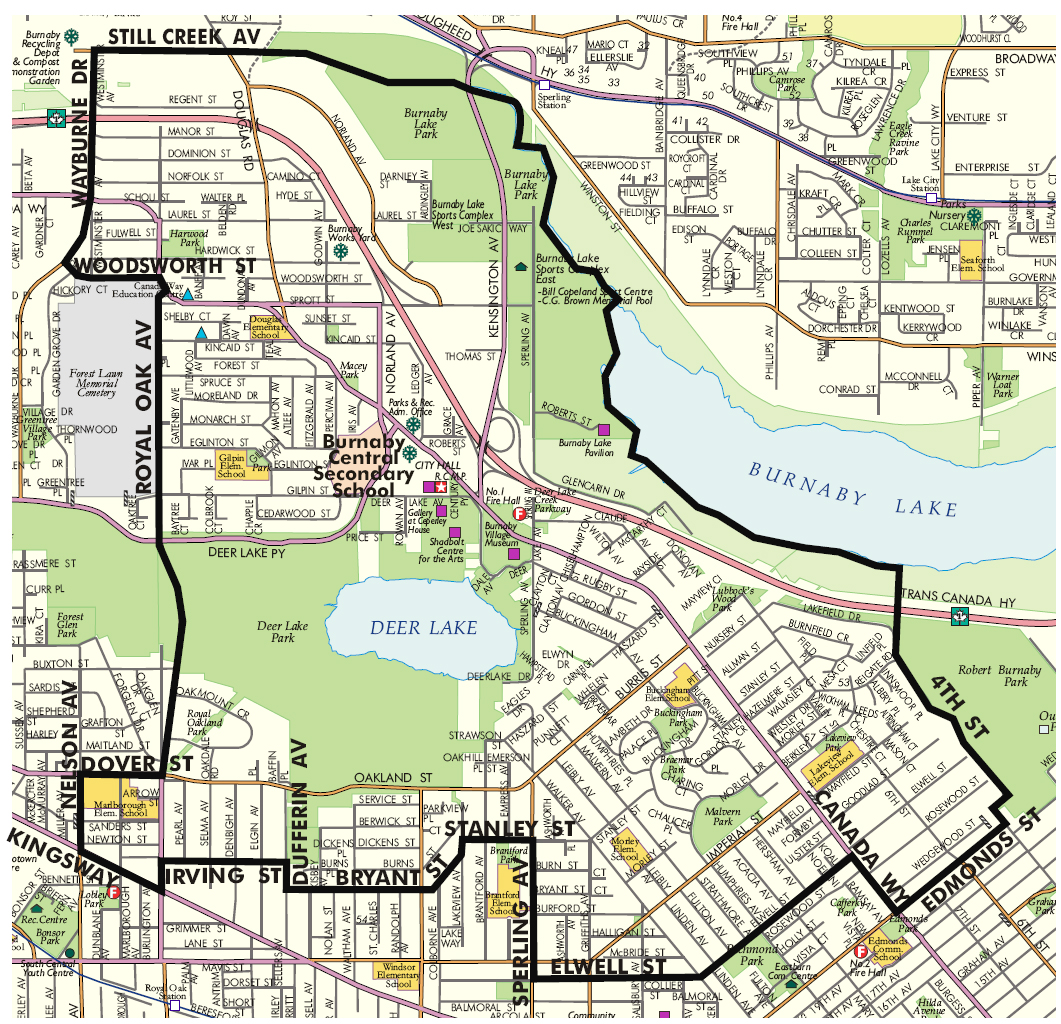Communities: Burnaby Burnaby occupies 98.60 square kilometres and is located at the geographical centre of the Greater Vancouver Regional District. Situated between the City of Vancouver on the west and Port Moody, Coquitlam and New Westminster on the east, the City is further bounded by the Burrard Inlet and the Fraser River on the North and South respectively.
Burnaby is a maturing, increasingly integrated community that is centrally located within a rapidly growing metropolitan area. Burnaby's characteristic has shifted from rural to suburban to largely urban. The City features high density residential areas, major commercial town centres, rapid transit, high technology research and business parks, comprehensive industrial estates and major post-secondary institutions.
As of October 15, 2010, there were 1,465 properties for sale in Burnaby. The listing prices for apartments range from approximately $144,000 for an older 661 sq ft 1 bedroom apartment to just under $870,000 for a 2 year old, 2 bedroom 1,270 sq ft penthouse apartment near Simon Fraser University.
The cost of a detached home in Burnaby ranges from $449,000 for an 80 year old 1,000 sq ft, 2 bedroom house in Big Bend, Burnaby South, to $16,900,000 for a 14,456 sq ft, 5 bedroom 8 bathroom house in Deer Lake, Burnaby South.
Population in 2009: 222,802
Burnaby has always had large ethnic and immigrant communities: North Burnaby near Hastings Street has long been home to many Italian restaurants and recreational bocce games, while Metrotown's ever-sprouting condominium towers in the south have been fuelled in part by more recent arrivals from China, South Korea, and the former Yugoslavia. According to the 2006 Census, 54% of Burnaby residents have a mother tongue that is neither English nor French.
The Burnaby School District (School District 41) administers 41 elementary schools and 8 secondary schools. The District also offers numerous specialized programs including Community & Continuing Education, International Education, French Immersion, Burnaby Online, Soccer Academy, Hockey Academy and Learning Through the Arts. Served by more than 4,000 staff, Burnaby School District enrolls almost 24,000 students (K-12) and provides programs and services to more than 16,000 adult learners.
The Burnaby School District also provides educational support and services for provincial resource programs within the district. These resources, which serve students from across the province include the BC Provincial School for the Deaf (elementary and secondary), the Provincial Outreach Program, the Provincial Oral Program for the Deaf & Hard of Hearing Students, Fraser Park Secondary Program,and Maples Secondary Program.
Major post-secondary institutions include the main campuses of Simon Fraser University (atop Burnaby Mountain) and the British Columbia Institute of Technology.
TransLink, the company responsible for public transportation within Metro Vancouver, provides a bus service and an automated rapid transit service called SkyTrain.
Major parklands and waterways in Burnaby include Burnaby Lake, Still Creek, the Brunette River, Central Park, Deer Lake, Squint Lake, Robert Burnaby Park, Kensington Park, and Burnaby Mountain.
Numbers taken from the 2006 Census:
-
Burnaby maintains a consistent share of the Greater Vancouver's population at 10%.
-
Compared with the Metro Vancouver (MV) region, Burnaby has a smaller share of residents under 20, but a slightly larger share of young adults 20-34 years old.
-
Compared with the larger Metro Vancouver region, Burnaby has a higher number of couples with children.
-
Burnaby has a slightly lower ratio of owned to rented buildings compared to Metro Vancouver and the province. In 2006, 39% of dwellings in Burnaby were rented, while 61% of dwellings were owned.
-
Of respondents who noted speaking predominantly one language at home, 62.3% reported speaking English.
-
The percentage of Burnaby residents whose first language was English has shown a decline in recent years to 43.5%.
-
In 2006, 51% of Burnaby's population were immigrants. Immigrants from Asia represented 66% of all immigrants in Burnaby, and Europe (including the UK) was the source of 29% of all immigrants in 2006.
-
28% of Burnaby residents have jobs within the City of Burnaby.
-
Burnaby's unemployment rate is 6.8% and its average household income (2006) is $74,413. Average family income in Metro Vancouver was $87,788.





